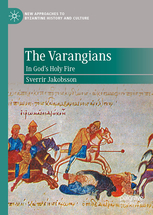Everyone knows that a Thing was the old Norse name for a meeting place where disputes were settled, trade concluded and weddings arranged. The name is reflected in modern Icelandic in Alþingi, or the Parliament. Thing in English also means (apart from that Marvel superhero) some “thing.” Having fun with the name is the That Jorvik Viking Thing, held annually in old Jorvik, present day York in England.
This year, the event has moved online, running from February 15th to 20th, with some events available for longer. Among the highlights is a performance by Einar Selvik from the band Wardruna, who plays on representations of old Viking instruments.
There is also crafting, mead making and the annual Poo Day, which explains why archaeologists have such a love for old poo which can act as a window to the past. You can even make your own poo but purists be warned, the ingredients are representations and not the real thing.
Some Eastern Vikings did make it to the market in Jorvik, one of the more notable being Egill Skallagrímsson who raided in the east and traded in the west, although he also managed to do some fighting in the latter.
For information and tickets, click: What’s on – That Jorvik Viking Thing (jorvikthing.com)



